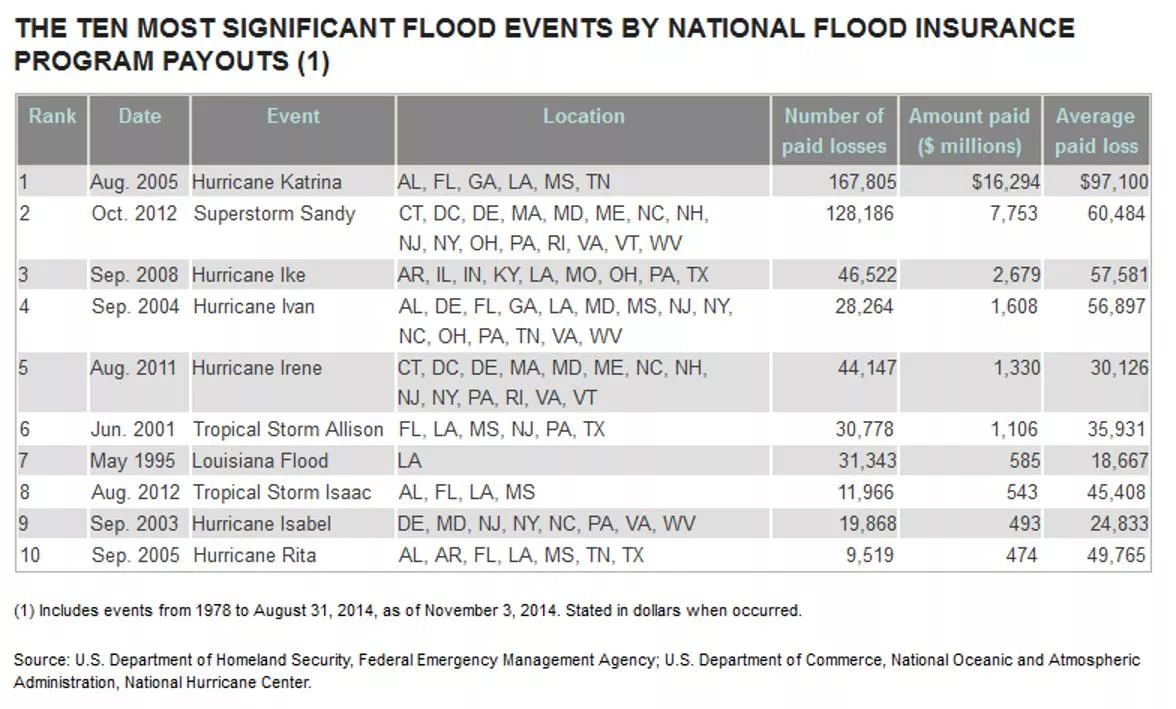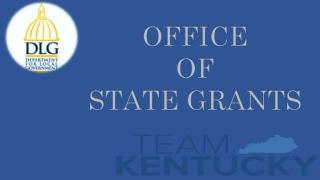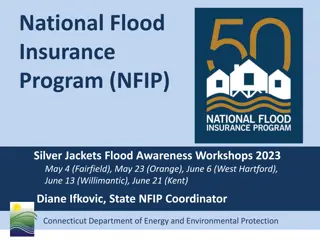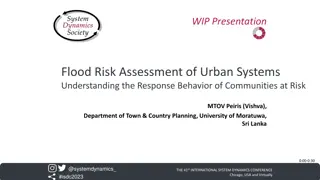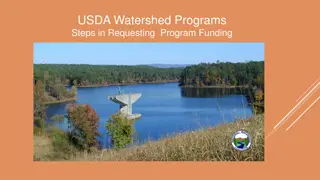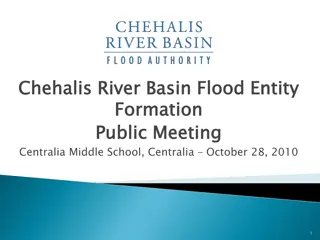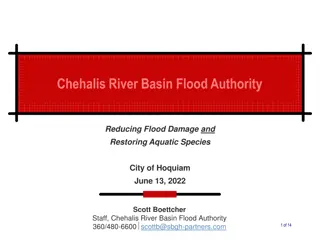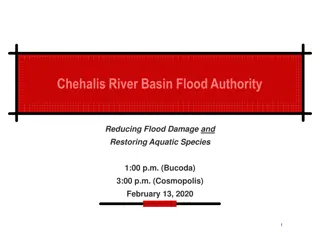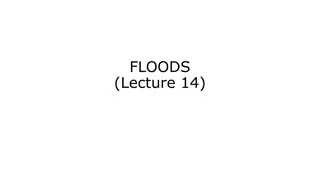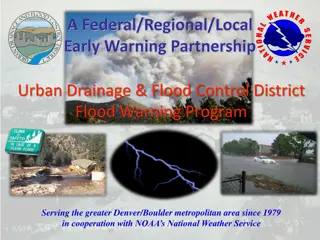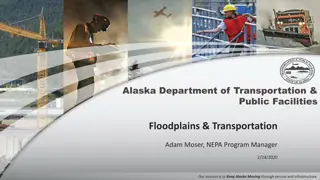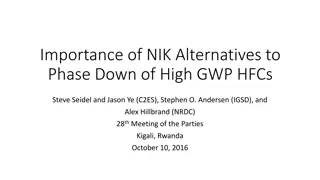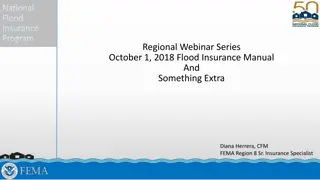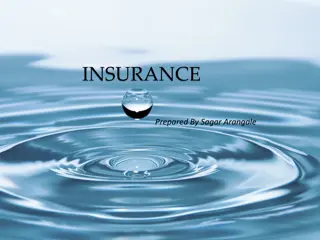Flood Insurance: Government Backed vs. Private Market Alternatives
National Flood Insurance Program (NFIP), historical data, low ownership rates, and public opinions on subsidies and rate increases. Understand the importance of flood insurance and the need for awareness.
Download Presentation

Please find below an Image/Link to download the presentation.
The content on the website is provided AS IS for your information and personal use only. It may not be sold, licensed, or shared on other websites without obtaining consent from the author. Download presentation by click this link. If you encounter any issues during the download, it is possible that the publisher has removed the file from their server.
E N D
Presentation Transcript
Flood Insurance: Government Backed vs. Private Market Alternatives National Hurricane Conference Austin, Texas April 2, 2015 Jeanne M. Salvatore, Senior Vice President, Public Affairs and Chief Communications Officer @JeanneSalvatore Insurance Information Institute 110 William Street New York, NY 10038 Tel: 212.346.5555 jeannes@iii.org www.iii.org
History of the NFIP The National Flood Insurance Program: Before Congress passed the National Flood Insurance Act in 1968, the national response to flood disasters had been to build dams, levees and other structures to hold back flood waters, a policy that may have encouraged building in flood zones. The National Flood Insurance Act created the National Flood Insurance Program (NFIP), which was designed to stem the rising cost of taxpayer funded relief for flood victims and the increasing amount of damage caused by floods. The NFIP has three components: to provide flood insurance, floodplain management and flood hazard mapping. Federal flood insurance is only available where local governments have adopted adequate floodplain management regulations for their floodplain areas as set out by NFIP. More than 20,000 communities across the country participate in the program. NFIP coverage is also available outside of the high- hazard areas. 3
Only 13% of American Homeowners have a flood insurance Policy Although there had been wide fluctuations in the past in the percentage of respondents who said they had flood insurance, this measure has remained around 13 percent in the six years since 2009. The proportion of those who say they have a flood insurance policy remains highest in the South and rose five percentage points in May 2014 to 20 percent, back to the levels reported in 2011 and 2012. The South was the only region to register a significant increase in this measure in 2014. In the Northeast, the proportion of homeowners who have flood insurance was 11 percent, basically unchanged from a year ago when it was 10 percent. Eight percent of homeowners in the West say have the coverage, down from 11 percent a year ago. In the Midwest, the site of river flooding in 2013, 7 percent of homeowners now say they have flood insurance, down five percentage points from 12 percent a year ago. 4
Percentage of People with Flood Insurance 5
Flood Insurance Coverage Flood damage is excluded under standard homeowners and renters insurance policies. Flood coverage, however, is available in the form of a separate policy both from the National Flood Insurance Program (NFIP) and from a few private insurers. Some insurers offer flood insurance policies for high-value properties. These policies may cover homes in noncoastal areas and/or provide enhancements to traditional flood coverage Private flood insurance is available for those who need additional insurance protection, known as "excess coverage, over and above the basic policy or for people whose communities do not participate in the NFIP. The NFIP provides coverage for up to $250,000 for the structure of the home and $100,000 for personal possessions. The comprehensive portion of an auto insurance policy includes coverage for flood damage. 8
Flood Insurance Coverage Coverage for the contents of basements is limited. The NFIP pays for systems that help make a home livable but not for personal possession There is no Additional Living Expenses (ALE) in standard flood policies. Coverage limits for commercial property are $500,000 for the structure and another $500,000 for its contents. To prevent people from putting off the purchase of coverage until waters are rising and flooding is inevitable, policyholders must wait 30 days before their policy takes effect. 9
Flood Insurance Coverage Flood insurance covers direct physical losses by flood and losses resulting from flood-related erosion caused by heavy or prolonged rain, coastal storm surge, snow melt, blocked storm drainage systems, levee dam failure or other similar causes. To be considered a flood, waters must cover at least two acres or affect two properties. Homes are covered for up to $250,000 on a replacement cost basis and the contents for up to $100,000 on an actual cash value basis. Replacement cost coverage pays to rebuild the structure as it was before the damage. Actual cash value is replacement cost minus the depreciation in value that occurs over time. 10
Water Damage Home Insurance Water that comes from the top down is covered by homeowners or renters insurance. For example, if wind shatters a window or damages the roof allowing rain or snow to get into the home, this is covered. Water damage caused by burst pipes and ice dams on a roof (a situation where melting snow is unable to drain properly through gutters, resulting in water seepage that can cause damage to ceilings, walls and even furniture) is also generally covered by home insurance policies. However, water that comes from the bottom up, such as an overflowing stream, river or lake caused by melting snow is covered separately, by flood insurance. There is coverage for back-up of sewers and drains under a home insurance policy, or a rider to an insurance policy. 11
The iiiToolkit: Putting Insurance Tools into the Hands of Consumers The iiiToolkit is a free mobile app suite that can help users put together a disaster plan, learn about selecting the right insurance for their needs and budget, and create and maintain a home inventory database. Takes an action oriented approach: make a checklist; create an inventory; have a conversation with your insurance professional. 12
Insurance Information Institute Online: www.iii.org www.InsuringFlorida.org Thank you for your time and attention!
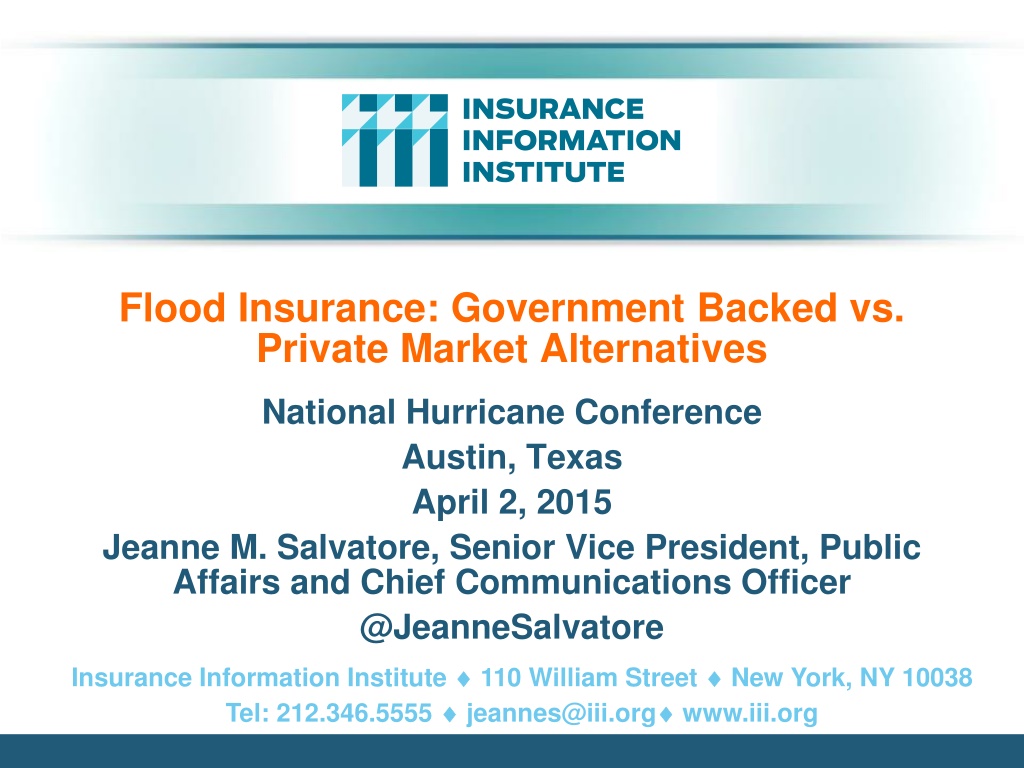
 undefined
undefined








